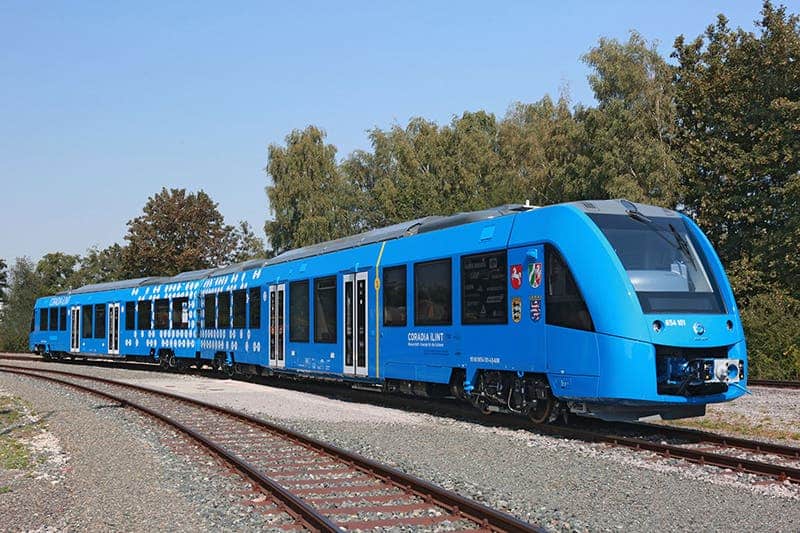Last week, French company Alstom showcased the first hydrogen-powered passenger train in the world. The vehicle will begin real-world testing on one line in Germany in 2017.

Hydrogen fuel cell technology allows engineers to create powerful transportation vehicles that emit only water — condensed, or as steam. Now the tech has finally been used to create a working train. Named Coradia iLint, the vehicle was unveiled at InnoTrans, an annual trade show in Berlin last week.
This super-quiet passenger train holds a hydrogen fuel tank on the cars’ roof, supplying fuel cells that generate electrical energy for the engine. Alstom hopes that this system will replace Europe’s fleet of diesel-burning trains, which are still seeing heavy use across the continent despite wide-scale electrification projects.
In the last months of 2017, the train will start running on the Buxtehude-Bremervörde-Bremerhaven-Cuxhaven line in Lower Saxony. The German Federal Railway Authority Eisenbahn-Bundesamt will start testing in fall 2016 and is expected to release a report on the vehicle by end of 2017. While yet unapproved by the Eisenbahn-Bundesamt, Lower Saxony’s local transportation authority has ordered 14 trains of the type from Alstom.
The iLint is the first train to power along railroads through hydrogen cells alone, but the idea is about a decade old now. Former AT&T strategic planned Stan Thompson coined the term “hydrail” in 2004 to describe any rail vehicle that uses hydrogen fuel cells. There have been several prototype hydrails in the past, most notably in Japan.
Hopefully, now that we have a working, commercially successful example of a hydrail, the technology will gain traction much faster — on rails and roads alike.


